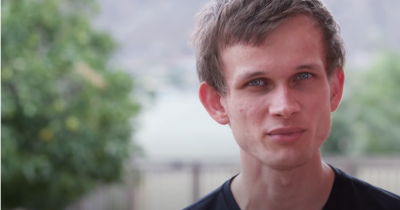Vitalik Buterin Says Bitcoin S2F Model Is Wrong
The co-creator of Ethereum disagrees with Bitcoin’s popular price-predicting scarcity model.

Key Takeaways
- The stock-to-flow model uses scarcity to predict Bitcoin’s price, assuming that its price will rise with each halving
- Ethereum co-founder Vitalik Buterin said he disagrees with the theory
- In his words, the theory is set up in a way where it is impossible to disprove
Share this article
The Bitcoin-stock-to-flow model predicts prices through scarcity, calling $288,000 BTC by 2024. Ethereum’s Vitalik Buterin calls the theory into question.
Stock-to-Flow Is Unprovable
First popularized by the anonymous crypto analyst PlanB, the stock-to-flow model predicts Bitcoin’s price through scarcity. Usually applied to commodities such as gold and silver, whose diminishing supply determines its price, the stock-to-flow model can be applied to an asset with a limited supply, such as Bitcoin.
The model takes into consideration Bitcoin’s block reward halvings and predicts that its price could reach as high as $288,000 in 2024. While Bitcoin maximalists celebrate this model, the co-founder of Ethereum is not convinced.
Vitalik Buterin called the model “unfalsifiable,” claiming that the very way it was set up made it impossible to disprove. If Bitcoin’s price peaked before the halving, the model proves to be correct as it suggests that the price rose in anticipation of the halving, he explained. This thinking, however, is applied to any other point in Bitcoin’s timeline when its price peaked:
The "halvings cause BTC price rises" theory is unfalsifiable:
Was the peak before the halving? Then it "rose in anticipation of the halving"
During? "Because of the halving"
After? "Because of…"The last $20k peak was near the halfway point between the 2016 and 2020 halvings. pic.twitter.com/dhVxhmECQS
— vitalik.eth (@VitalikButerin) June 14, 2020
Later on in the conversation, he affirmed his position, saying he “disagreed” with the model entirely.
Applying Scarcity to Bitcoin is Incorrect, Buterin Says
Some Twitter users noted that the stock-to-flow model itself doesn’t imply that a peak is a direct consequence of the block reward halving, but that each period between two halvings sees different orders of magnitude due to the changes in supply. If a period between two halvings turns out not to follow this pattern, it would make the theory falsifiable.
Ricardo Lopes, a software developer, replied that if prices between two halvings decreased, then that would disprove the model. PlanB, the analyst that popularized the model, chimed into the discussion, saying that halvings did make Bitcoin scarcer and that the model wasn’t so much about the “peaks,” but rather the average price levels the coin sees between halvings.
Share this article
